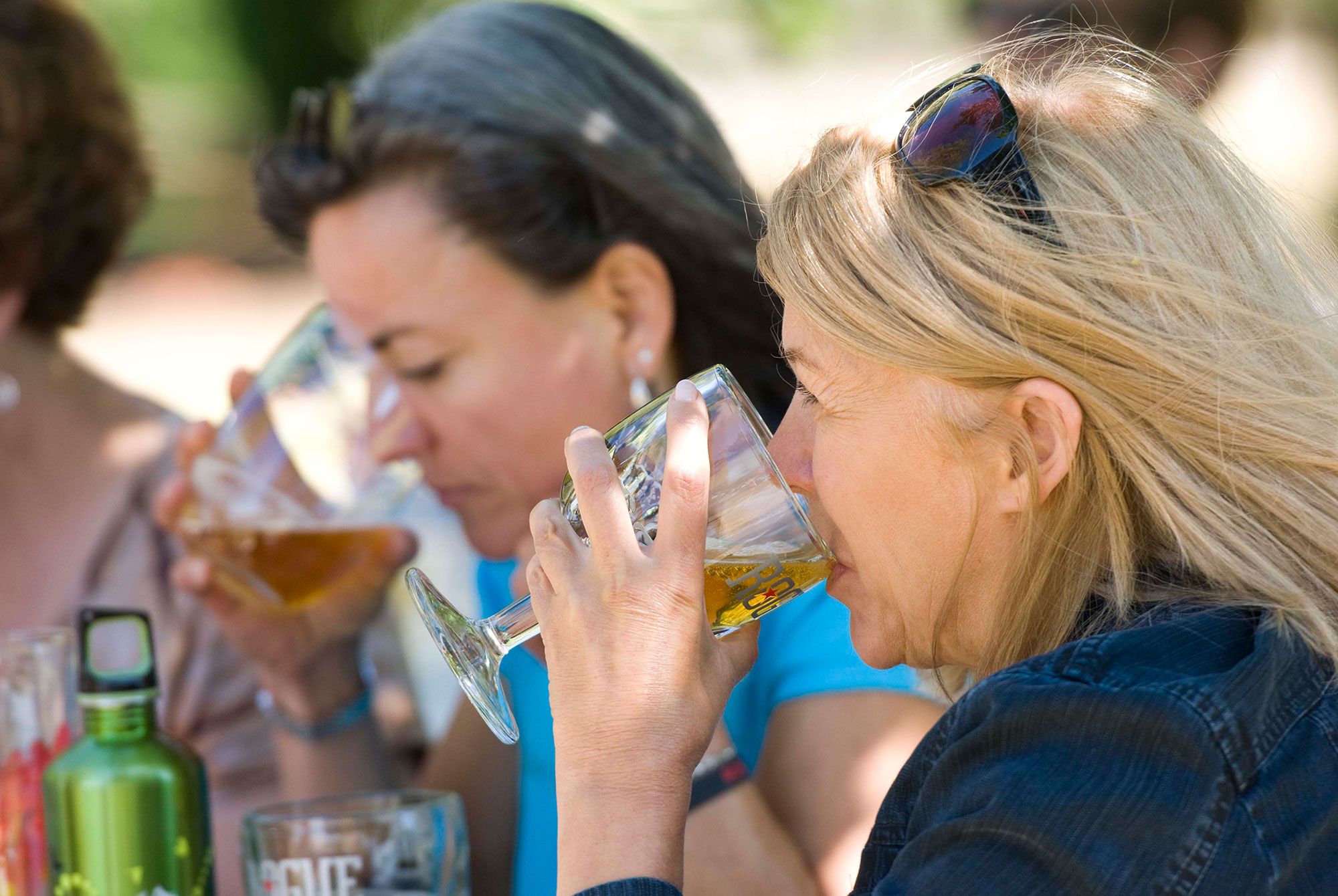Shop
Does Craft Beer Have a Gender Problem?
With women representing only a quarter of craft beer drinkers, organizations look to close the gap.
With so much passion and positivity flowing out of the thousands of nano, micro, and craft breweries across the country, it’s difficult to conceive of the industry as being intentionally exclusive. Regardless of intent, however, the craft beer industry is largely dominated by white men. And culturally, even as more women and minorities enter the field as brewers, writers, and pub owners, craft beer can still very much feel like a boys’ club.
According to the Brewer’s Association, women comprise 25 percent of all craft beer drinkers. The demographic within the industry is only slightly better; a study by Auburn University indicates that women represent 29 percent of all brewery workers. While these numbers indicate that women are active producers and consumers in the industry, they are still the minority. Varying opinions, backgrounds, and experiences provide richer and deeper pools of knowledge in any system. By including more women and minorities, the craft beer industry stands to strengthen its foundation, to develop a better product, and to reach a broader consumer base. Unfortunately, there is no simple solution to achieving a more diverse industry.
Across the country, women’s brewers guilds have been established as spaces for collaboration and support. The Pink Boots Society, the largest such organization, was created “to assist, inspire and encourage women beer industry professionals to advance their careers through education.” The topic of increasing women’s participation in beer, or how to even talk about it, is a well worn issue for Executive Director Emily Engdahl.
According to the Brewer’s Association, women comprise 25 percent of all craft beer drinkers.
In Episode 28 of the Beervana Podcast, titled “Women in Beer,” Engdahl says, “It’s not necessarily that I think that it’s not a valid issue to talk about. I just get tired of being told that it’s something we should make an issue of.”
In an ideal world, the industry would be balanced and welcoming, and women wouldn’t be seen as an anomaly. Unfortunately, sexism continues to be a larger social problem that inevitably trickles down into the world of craft beer. Organizations like the Pink Boots Society indicate that women in the industry use a supportive network to face these issues together. Until these issues disappear entirely, however, they remain topics for discussion.
Engdahl goes on to say, “Until I hear from my female peers that their experiences are changing and that the tides are turning significantly, I don’t think that the work there is done, just as it’s not done in any of the other great social issues.”
But herein lies the tricky question: when does focusing on “women in beer” exacerbate the issue, perpetuating further sexism? Where do we draw the line between productive conversations and sexism?
Recently, Men’s Health published an article titled 30 Female Beer Lovers You Must Follow on Instagram. Based on the title alone, the piece appears to be a positive nod to women in beer. However, upon scrolling through the list, it becomes evident that the article is really only about the photographs, with no mention of the women’s background or accomplishments.
Amanda Mixon, aka @thebeervixen, is number eight on the Men’s Health list. As owner of a new craft beer bar, The Branch in Houston, Texas, she has experience in the both the service and entrepreneurial sides of the industry. When asked about the article, she said, “I see what they did there. Some people are upset about it being sexist, about it being about looks, and for me, that very well could have been the situation, but it’s allowed me to meet 29 other women who are in craft beer.”
Krisstin Sibley, a full-time archaeologist and lifelong beer enthusiast, is number nine on the list with the handle @herhops. Agreeing with Mixon, she says, “It was really awesome to have my account exposed to a larger audience from that article. It brought a ton of new followers and connected the beer girls in that article. I’ve personally received and seen a larger outpouring of support since that article, which is awesome.”
If anything, according to Mixon and Sibley, the article is a jumping off point for deeper journalistic investigations that push the conversation about women in beer. Despite any sexist implications from the article, it nevertheless strengthens a small community of women in craft beer.
“Any conversation is a good conversation when it comes to craft beer and women,” says Mixon.
So where does the industry go from here? Do we welcome articles like the one in Men’s Health, despite what some interpret as objectification?
The answer remains unclear. What is clear, however, is that the conversations must continue and women and minorities must continue to show up as positive and welcoming faces within the industry.
In an interview with Hop Culture, Laura Ulrich, the President of the Pink Boots Society, agrees. To her, there are no tidy answers to these questions, but some things are certain. “We’re better off than where we were ten years ago. We have phenomenal women that are making some of the most phenomenal products and it’s kind of up to the consumers if they want to make that choice, if they want to be diversified, or if they just want to drink the same old same old,” she says. “You have to educate your consumers and how do you do that? You just gotta be out there, in front of them, and just make sure that they’re aware.”


